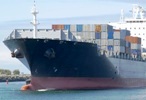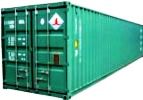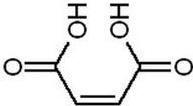| Mubychem Group, established in 1976, is the pioneer manufacturer of Maleic Acid, Pharmaceutical, Fragrance & Flavor chemicals in India. Mubychem Group has several manufacturing facilities spread across Gujarat and Mumbai India and world wide contacts and toll manufacturers. We are exporting globally to countries like USA, Canada, Europe, UAE, South Africa, Tanzania, Kenya, Egypt, Nigeria, Uganda, Turkey, Mexico, Brazil, Chile, Argentina, Dubai etc. |
The participating units have one or more accreditations like FDA - GMP approval; ISO-9001 Certified; "REACH"registered; ISO-22000; Kosher Certified;Halal Certified; HACCP. We offer Pure & IP BP USP FCC Food Grade ACS AR Analytical Reagent Grades of Chemicals | |







Maleic Acid Manufacturers, MSDS Sheet
Maleic Acid BP USP IP FCC Food grade
Maleic Acid
Technical & Pure.
Also IP BP Ph. Eur. USP ACS AR LR FCC Food Grades

Maleic Acid MSDS Sheet, Material Safety Data Sheet
1. Product Identification
Synonyms: (Z)-Butenedioic acid; cis-butenedioic acid; maleinic acid, toxilic acid
CAS No.: 110-16-7
Molecular Weight: 116.08
Chemical Formula: HOCOCH:CHCOOH
2. Composition/Information on Ingredients
Ingredient: Maleic Acid
CAS No.: 110-16-7
Percent: 100%
3. Hazards Identification
Potential Acute Health Effects:Maleic Acid is very hazardous in case of eye contact (irritant), of ingestion, Hazardous in case of skin contact (irritant), of inhalation (lung irritant). Slightly hazardous in case of skin contact (permeator). Corrosive to eyes and skin. The amount of tissue damage depends on length of contact. Eye contact can result in corneal damage or blindness. Skin contact can produce inflammation and blistering. Severe over-exposure can produce lung damage, choking, unconsciousness or death. Inflammation of the eye is characterized by redness, watering, and itching.
Potential Chronic Health Effects:
Carcinogenic Effects: Not available.
Mutagenic Effects: Mutagenic for mammalian somatic cells.
Teratogenic Effects: Not available.
Developmental Toxicity: Not available.
The substance may be toxic to kidneys, lungs. Repeated or prolonged exposure to the substance can produce target organs damage. Repeated exposure of the eyes to a low level of dust can produce eye irritation. Repeated skin exposure can produce local skin destruction, or dermatitis. Repeated inhalation of dust can produce varying degree of respiratory irritation or lung damage. Repeated exposure to a highly toxic material may produce general deterioration of health by an accumulation in one or many human organs.
4. First Aid Measures
Inhalation: If Maleic Acid is inhaled, remove to fresh air. If not breathing, give artificial respiration. If breathing is difficult, give oxygen and get medical attention immediately.
Ingestion: Induce vomiting immediately as directed by medical personnel. Never give anything by mouth to an unconscious person. Get medical attention.
Skin Contact: Immediately flush skin with plenty of water for at least 15 minutes while removing contaminated clothing and shoes. Get medical attention. Wash clothing and shoes before reuse.
Eye Contact: Immediately flush eyes with plenty of water for at least 15 minutes, lifting lower and upper eyelids occasionally. Get medical attention immediately.
5. Fire Fighting Measures
Fire: As with most organic solids, fire is possible at elevated temperatures or by contact with an ignition source.
Explosion: Fine dust dispersed in air in sufficient concentrations, and in the presence of an ignition source is a potential dust explosion hazard.
Fire Extinguishing Media: Water spray, dry chemical, alcohol foam, or carbon dioxide.
Special Information: In the event of a fire, wear full protective clothing and NIOSH-approved self-contained breathing apparatus with full face piece operated in the pressure demand or other positive pressure mode.
6. Accidental Release Measures
Small Spill: Use appropriate tools to put the spilled solid in a convenient waste disposal container.
Large Spill: Corrosive solid. Poisonous solid. Stop leak if without risk. Do not get water inside container. Do not touch spilled material. Use water spray to reduce vapors. Prevent entry into sewers, basements or confined areas; dike if needed. Eliminate all ignition sources.
7. Handling and Storage
Keep Maleic Acid in a tightly closed container, stored in a cool, dry, ventilated area. Protect against physical damage. Isolate from incompatible substances. Containers of Maleic Acid may be hazardous when empty since they retain product residues (dust, solids); observe all warnings and precautions listed for the product. Avoid dust formation and control ignition sources. Employ grounding, venting and explosion relief provisions in accord with accepted engineering practices in any process capable of generating dust and/or static electricity. Empty only into inert or non-flammable atmosphere. Emptying contents into a non-inert atmosphere where flammable vapors may be present could cause a flash fire or explosion due to electrostatic discharge.
8. Exposure Controls/Personal Protection
Airborne Exposure Limits: None established.
Ventilation System: A system of local and/or general exhaust is recommended to keep employee exposures as low as possible. Local exhaust ventilation is generally preferred because it can control the emissions of the contaminant at its source, preventing dispersion of it into the general work area. Please refer to the ACGIH document, Industrial Ventilation, A Manual of Recommended Practices, most recent edition, for details.
Personal Respirators (NIOSH Approved): For conditions of use where exposure to dust or mist is apparent and engineering controls are not feasible, a particulate respirator (NIOSH type N95 or better filters) may be worn. If oil particles (e.g. lubricants, cutting fluids, glycerin, etc.) are present, use a NIOSH type R or P filter. For emergencies or instances where the exposure levels are not known, use a full-face positive-pressure, air-supplied respirator. WARNING: Air-purifying respirators do not protect workers in oxygen-deficient atmospheres.
Skin Protection: Wear impervious protective clothing, including boots, gloves, lab coat, apron or coveralls, as appropriate, to prevent skin contact.
Eye Protection: Use chemical safety goggles and/or full face shield where dusting or splashing of solutions is possible. Maintain eye wash fountain and quick-drench facilities in work area.
9. Physical and Chemical Properties
Appearance: Maleic Acid is white crystals.
Odor: Faint acidulous odor.
Solubility: Soluble in water.
Density: 1.590 @ 20C/4C
pH: < 7 Acidic.
% Volatiles by volume @ 21C (70F): 0
Boiling Point: 135C (275F) Decomposes.
Melting Point: 130 - 139C (266 - 282F)
Vapor Density (Air=1): 4.0
Vapor Pressure (mm Hg): No information found.
Evaporation Rate (BuAc=1): No information found.
10. Stability and Reactivity
Stability: Maleic Acid is stable under ordinary conditions of use and storage.
Hazardous Decomposition Products: Carbon dioxide and carbon monoxide may form when heated to decomposition.
Hazardous Polymerization: Will not occur.
Incompatibilities: Strong oxidizers.
Conditions to Avoid: Heat, dusting and incompatibles.
11. Toxicological Information
Oral rat LD50: 708 mg/Kg Skin rabbit LD50: 1560 mg/Kg Investigated as a mutagen.
--------\Cancer Lists\ ------------------------------------------------------
------------------------- NTP Carcinogen---
Ingredient -------------- Known -- Anticipated -- IARC Category
------------------------- -------- ----------- -------------
Maleic Acid (110-16-7) -- No -----
No -------- -- None
12. Ecological Information
Environmental Fate: When released into the soil, Maleic Acid is expected to leach into groundwater. When released into the soil, this material is expected to readily biodegrade. When released into water, this material is expected to readily biodegrade. When released into water, this material is not expected to evaporate significantly. When released into the air, this material is expected to exist in the aerosol phase with a short half-life. When released into the air, this material is not expected to be subject to wet deposition. When released into the air, this material is expected to be degraded by reaction with ozone and photo chemically produced hydroxyl radicals. This material is not expected to significantly bio accumulate. This material has an estimated bio concentration factor (BCF) of less than 100.
Environmental Toxicity:
TLm /Fathead minnow/5ppm/96 hr./fresh water
TLm/Mosquito fish/240 ppm/24-48 hr./fresh water
13. Disposal Considerations
Whatever cannot be saved for recovery or recycling should be managed in an appropriate and approved waste disposal facility. Processing, use or contamination of this product may change the waste management options. State and local disposal regulations may differ from federal disposal regulations. Dispose of container and unused Maleic Acid in accordance with legal requirements.
14. Transport Information
Not regulated.
15. Regulatory Information
--------\Chemical Inventory Status - Part 1\--------------------------------- Ingredient ------------------------------------ TSCA EC Japan Australia ----------------------------------------------- ---- --- ----- --------- Maleic Acid (110-16-7) ------------------------ Yes Yes Yes Yes --------\Chemical Inventory Status - Part 2\--------------------------------- ------------------------------------------------------ --Canada-- Ingredient ------------------------------------ Korea DSL NDSL Phil. ----------------------------------------------- ----- --- ---- ----- Maleic Acid (110-16-7) ------------------------ Yes Yes No Yes --------\Federal, State & International Regulations - Part 1\---------------- ----------------------------------------- -SARA 302- ------SARA 313------ Ingredient ------------------------------ RQ TPQ List Chemical Catg. ----------------------------------------- --- ----- ---- -------------- Maleic Acid (110-16-7) ------------------ No No No No --------\Federal, State & International Regulations - Part 2\---------------- ---------------------------------------------------- -RCRA- -TSCA- Ingredient ------------------------------ CERCLA 261.33 8(d) ----------------------------------------- ------ ------ ------ Maleic Acid (110-16-7) ------------------ 5000 No No
Chemical Weapons Convention: No; TSCA 12(b): No; CDTA: No
SARA 311/312: Acute: Yes; Chronic: Yes; Fire: No; Pressure: No
Reactivity: No; (Pure / Solid)
Australian Hazchem Code: None allocated.
Poison Schedule: None allocated.
16. Other Information
Disclaimer:
******************************
Our company provides this Maleic Acid MSDS information sheet contained herein in good faith but makes no representation as to its comprehensiveness or accuracy. This Maleic Acid MSDS sheet is intended only as a guide to the appropriate precautionary handling of the material by a properly trained person using this product. Individuals receiving the information must exercise their independent judgment in determining its appropriateness for a particular purpose.
******************************
Maleic Acid Manufacturers:
MUBYCHEM GROUP
CHINCHBUNDER, MUMBAI 400009, INDIA
TEL: (OFFICE) 91-22-23774610, 91-22- 23723564. 91-22-23728264
e-mail: anmol@pcmenergy.com

Copyright and Usual Disclaimer is Applicable.

Global or International Maleic Acid BP USP IP FCC Food Grade Suppliers, Exporters, Importers, Manufacturers
If I give you “My Word” Nobody can undo it.
If I sign an “Agreement” my Lawyer will undo it
Perfection is made up of small thing but it is not small.
